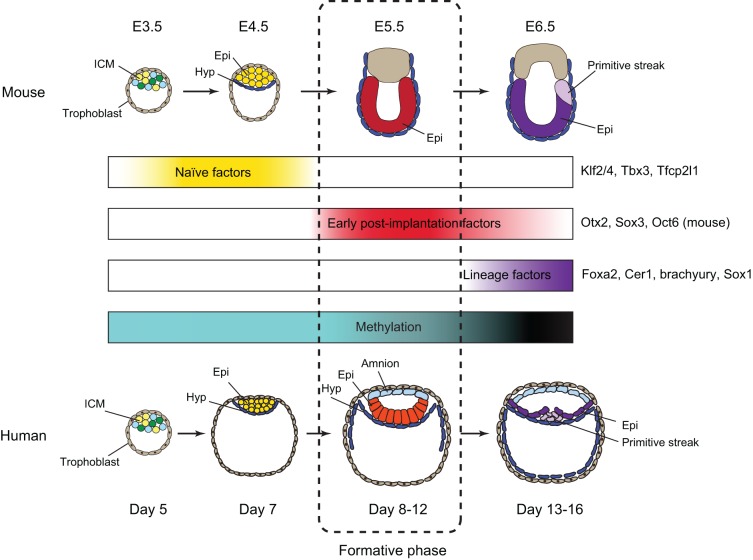Fig. 2.
Developmental progression of pluripotency in mouse and human embryos. Pluripotent cells begin to emerge in the ICM and segregate to constitute the naïve epiblast. The multi-coloured cells of the ICM indicate mosaic specification of epiblast and hypoblast. After implantation in both mouse (E5) and human (day 8) embryos the epiblast expands as a pseudoepithelial layer overlying the hypoblast (also called the extra-embryonic endoderm), forming a cup-shaped cylinder in mice and a disc in humans. During this period, epiblast cells may remain unpatterned and without molecular specification. Subsequently, epiblast cells become fixed in a columnar epithelium, display regionalised expression of specification factors in response to extra-embryonic signalling centres, and initiate gastrulation. This sequence of events is reflected in transcriptional and epigenetic changes. The distinction between naïve pluripotency and the hypothesised formative phase appears to be acute, whereas the subsequent transition to primed pluripotency is more gradual. Formative and primed phases may be present together at the early stages of gastrulation, particularly in humans. Epi, epiblast; Hyp, hypoblast.

